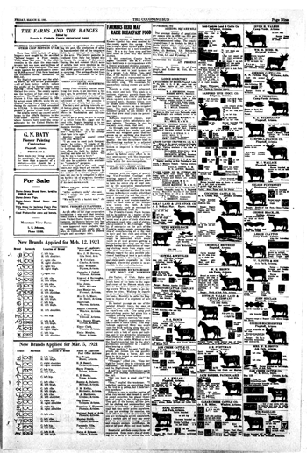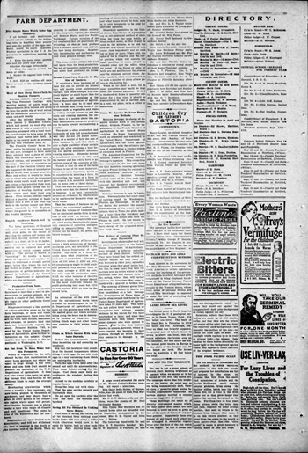Historical Agricultural News
HAN
About this site
Welcome to Historical Agricultural News, a search tool site for exploring the Library of Congress Chronicling America database for information on the farming organizations, technologies, and practices of America’s past. Agricultural history is often presented in terms of economics; once we get beyond subsistence, agriculture is, after all, a business. But farming is also a window into communities, social and technological change, and concepts like progress, development, and modernity. These agricultural connections are of significance to those interested in various topics including immigration and assimilation, language use and communication, education and affiliations, and demographic transitions.
The long human history of agriculture—approximately 10,000 years—offers a mostly static arc of development. It is within the 19th and 20th centuries that we see big changes emerging, as new practices, mechanization, and chemical science begin to shape farming into the industry we recognize today. The time period encompassed by the Chronicling America newspaper collection is perhaps the most crucial in terms of paradigm shifts, for it is within these 86 years (1836 to 1922) that many breaks with past practices occurred, and new inventions, science, and technology first appeared.
The idea behind the development of Historical Agricultural News is that newspapers were key participants in the spread of agricultural ideas, technologies, and practices, and that a topic‐specific search tool could help illustrate the role newspapers (the social media of the day) played. Historical Agricultural News can assist anyone curious about this era’s agricultural organizations and institutions—the bodies that originated and disseminated most new developments. Combining keywords that identify these groups with keywords highlighting specific agricultural products can illuminate the organizations’ purposes, evolution, and influence. For example, how did the farm bureau help farmers become profitable businessmen? Or, how did the youth program, the 4‐H (known at that time as Boys and Girls Clubs), assist the land‐grant colleges in training new farmers?
More About Historical Agricultural News
Search for News
Search
Search for News
The Search tool on Historical Agricultural News allows site users to tailor a search query to specific areas of agriculture—select one or all from the organizations, crops, livestock, time frame, newspapers, and states you wish to explore. We have provided some suggested search areas, but you also have the option to enter your own search terms. So, enter the Search and start to explore our agricultural past!

LOC Chronicling America.

LOC Chronicling America.

LOC Chronicling America.
Ag News & the Humanities
Humanities
Ag News & the Humanities
How can Historical Agricultural News contribute to humanities research? Recognizing the communications involving agriculture as windows into social and scientific developments of earlier eras might be fertile areas for historians to plumb, but we believe there are further areas to explore, including the field of digital humanities. An archive such as the Library of Congress Chronicling America is, by its nature, a digital humanities project. Historical Agricultural News builds on the initial database project by culling a specific story out of the extensive field of narratives available in Chronicling America.
In her 2007 response to Ed Folsom’s argument that database and narrative are mutually exclusive forms of communication, N. Katherine Hayles asserts that database and narrative exist in a codependent state. Each needs the other; database without narrative is meaningless, and narrative “needs database . . . to enhance its cultural authority and test the generality of its insights” (1603). This premise, applied to the Chronicling America newspaper collection database, suggests that a unifying narrative will provide users with structure within which to create meaning; without this unification, the database is just a vast collection of diverse information. Hayles’ view of database and narrative as “natural symbionts” (1603) offers a framework for developing a user interface that shapes a portion of the big data array into one possible narrative.
More on Agricultural News and the Humanities.